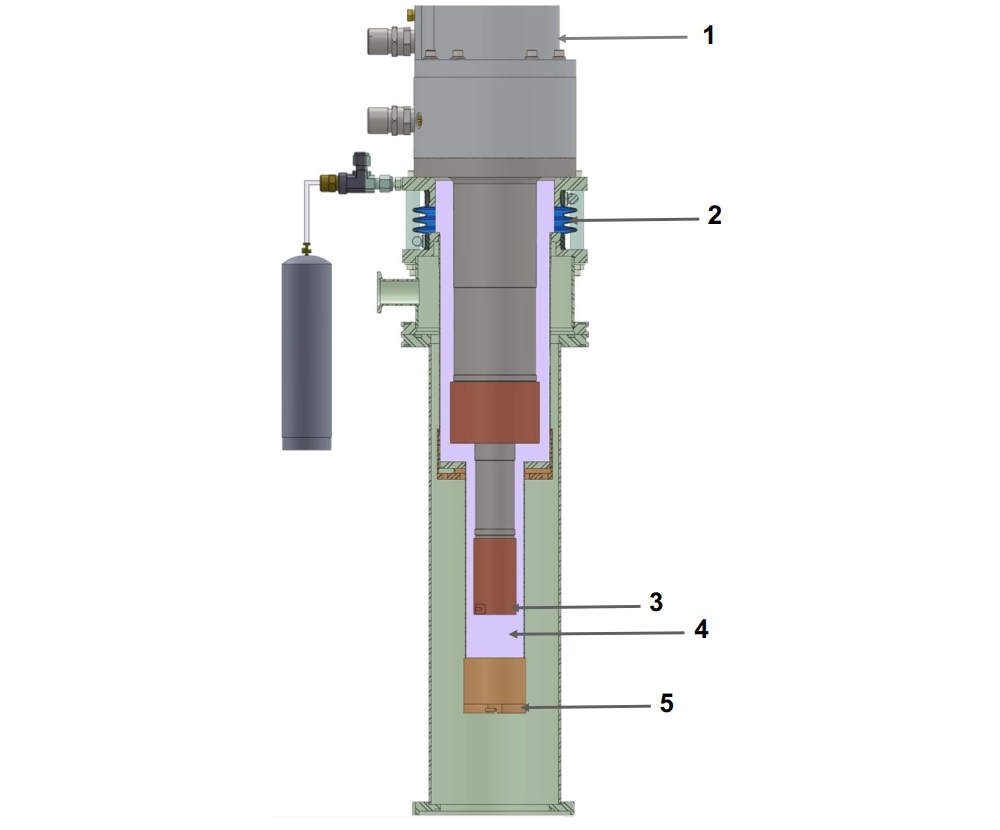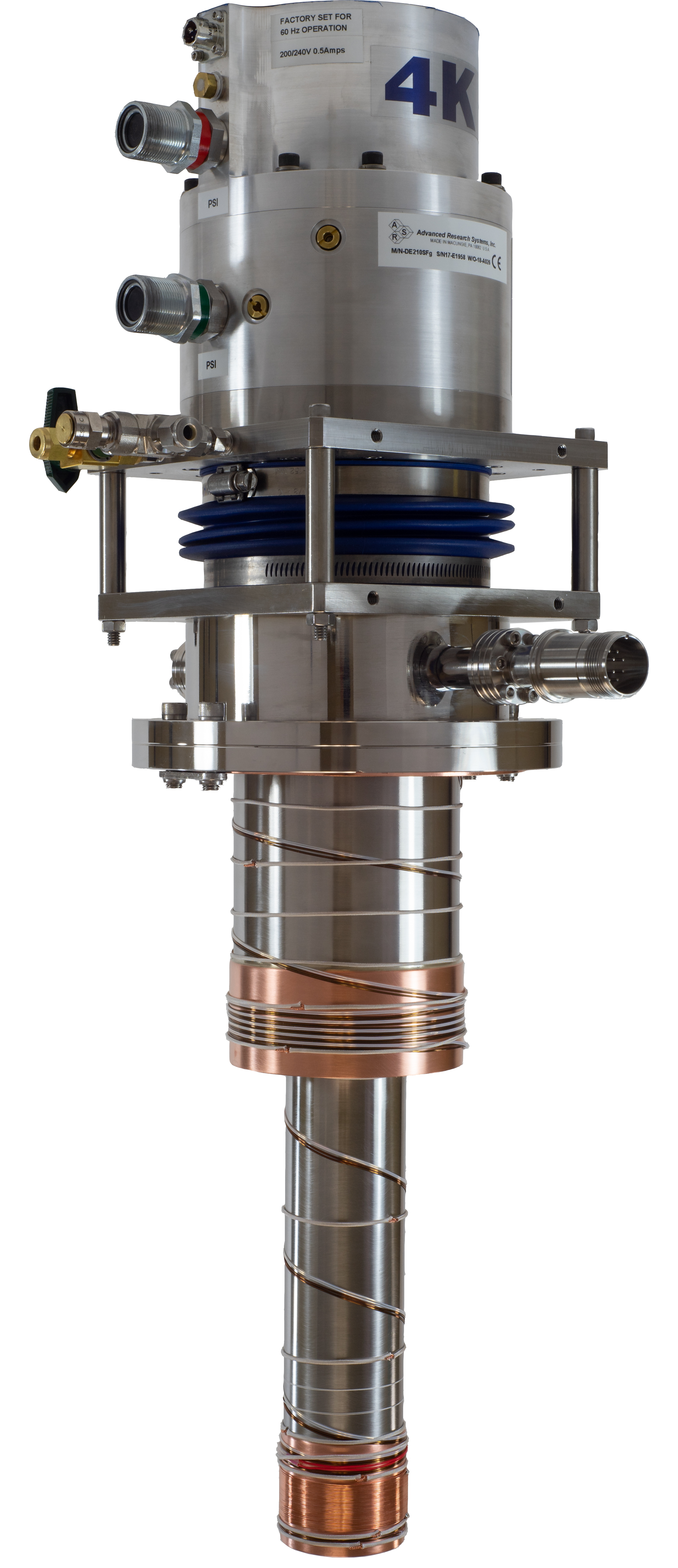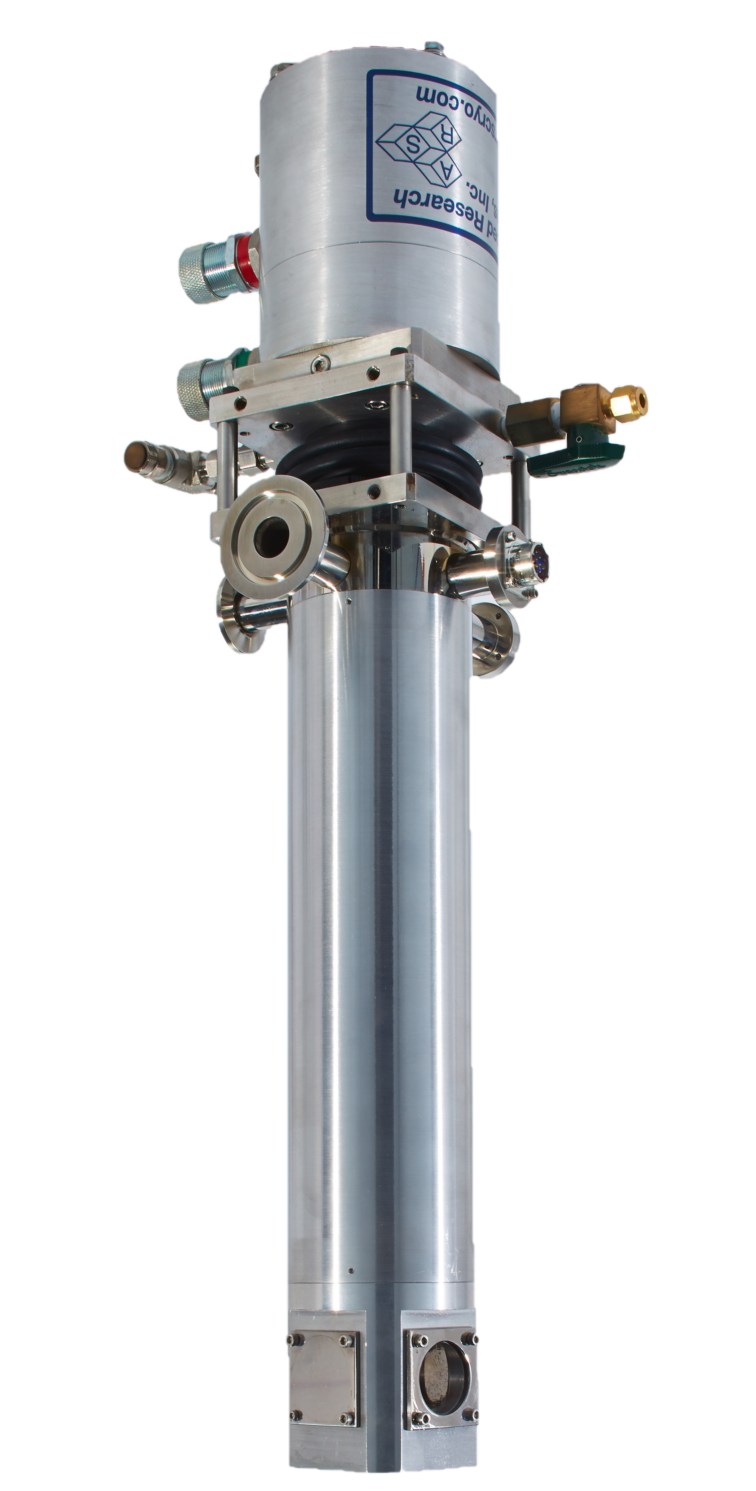Nanoscience Cryostats
Modern nanoscience and quantum applications are increasingly demanding of sample stability at low temperature. To meet this need, ARS continues to develop vibration reduction technologies like the X-20 Ultra Low Vibration Interface for closed cycle cryostats.
As the largest contributor of vibrations, the closed cycle cryocooler is physically decoupled from the sample space, convectively cooling it via a highly efficient heat exchanger. This method results in the following benefits:
Nanometer scale vibrations at the sample mount
Cryocooler vibrations decoupled from the optical table and directed away from the experiment entirely
Expensive and scarce liquid helium is not required
Similar to our Standard Laboratory Cryostats, our Nanoscience Cryostats are purpose designed for various measurements and setups:
X-20 Ultra Low Vibration Interface
The closed cycle cryocooler (1) is independently mounted from the system, connected to the laboratory interface only by soft rubber bellows (2). The cryocooling stage (3) cools helium gas (4) in the interface, convectively cooling the heat exchanger (5). The sample is placed in the laboratory interface (shaded green) on the opposite side of the heat exchanger (5), enjoying ultra-low vibrations.
µDrift Quantum Optics
Designed for ultimate sample stability and optical access, the µDrift cryostat sports cutting edge drift cancellation technology in a modular and spacious sample chamber suitable for Quantum Optics, like Quantum Dots and Nitrogen Vacancy (N-V) Centers.
The µDrift cryostat utilizes the X-20 Ultra Low Vibration Interface, and our latest drift-compensating technology to minimize sample motion relative to the optical table. High cooling power helps to overcome parasitic heat loads from accessories like nanopositioners, in-vacuum objective lenses, and multiple feedthroughs.
The optical chamber is fully customizable to conform to the user’s needs, and its window axes stand at a low beam height (< 12 cm) above the optical table surface, even with nanopositioners installed.
| Model | Base Temperature | Vibration | Drift | |
|---|---|---|---|---|
| µDrift | 3.5 K | 7.5 K | 5 - 10 nm | < 1 µm per day, relative to table | Product Page |
X-20-OM Optical Microscopy
The X-20-OM series closed cycle cryostat combines our ultra-low vibration interface with a sample chamber designed for ultra stable microscopy measurements such as Microphotoluminescense (MicroPL) and Micro Raman.
The low-profile sample chamber fits under most microscopes and permits a working distance as low as 1.5 mm. Optics can be exchanged for both reflection and transmission modes, and the sample chamber is rotatable by 45° increments for horizontal optical paths. Window plates of with different window types, apertures, and thicknesses are available to permit transmission for X-Ray, UV, Visible, IR and THz wavelengths.
Expanding the sample chamber allows integration of nanopositioners, Diamond Anvil Cells (DAC), in-vacuum objective lenses and other equipment.
| Model | Base Temperature | Vibration | Sample Space | |
|---|---|---|---|---|
| DMX-20-OM | 8 K | 9.5 K | 13 K | 3 - 5 nm | Ø19 x 7 mm | Product Page |
| GMX-20-OM | 3.5 K | 5 - 10 nm | Ø19 x 7 mm | Product Page |
X-20B Ultra High Vacuum
Featuring the X-20 Ultra Low Vibration System, the X-20B Series cryostats bring high cooling power to a UHV chamber for a wide variety of sensitive applications, such as Ion Trapping and Neutral Atom Trapping, SPM techniques like Scanning Electron Microscopy (SEM) and Atomic Force Microscopy (AFM), synchrotron/cyclotron beamline end-stations like Photoemission Spectroscopy (ARPES), and many others.
The X-20B interface is bakeable to 200°C. If UHV conditions are not required, the X-20B can instead be built with an ISO-K or ISO-F main vacuum flange instead of an ISO-CF Conflat. The interface can be easily elongated with a customized extensions, flanged radiation shields and brazed-on custom cold plates allow ideal performance.
| Model | Base Temperature | Flange Size | Vibration | |
|---|---|---|---|---|
| DMX-20B | 6 K | 7.5 K | 11 K | 6" DN100CF | 3-5 nm | Product Page |
| GMX-20B | 3.5 K | 10 K | 8" DN160CF | 5-10 nm | Product Page |
X-20 Optical Spectroscopy
Our X-20 cryostat resembles our X-1 Series cryostats, but it features our Ultra Low Vibration Interface, achieving nanometer stability for measurements like microPL and microRaman, Mössbauer Spectroscopy, and micro FTIR.
The four-window optical block permits 90° reflection mode, and its larger volume gives space for bigger sample holders and more accessories.
| Model | Base Temperature | Windows | Sample Space | |
|---|---|---|---|---|
| DMX-20 | 6 K | 7 K | 11 K | Four; Ø31 mm | Ø47 x 39 mm | Product Page |
| GMX-20 | 4 K | 10 K | Four; Ø31 mm | Ø61 x 39 mm | Product Page |
Need something else?
Check out our Standard Laboratory Cryostats or our Special Applications Cryostats, or talk to an expert.





